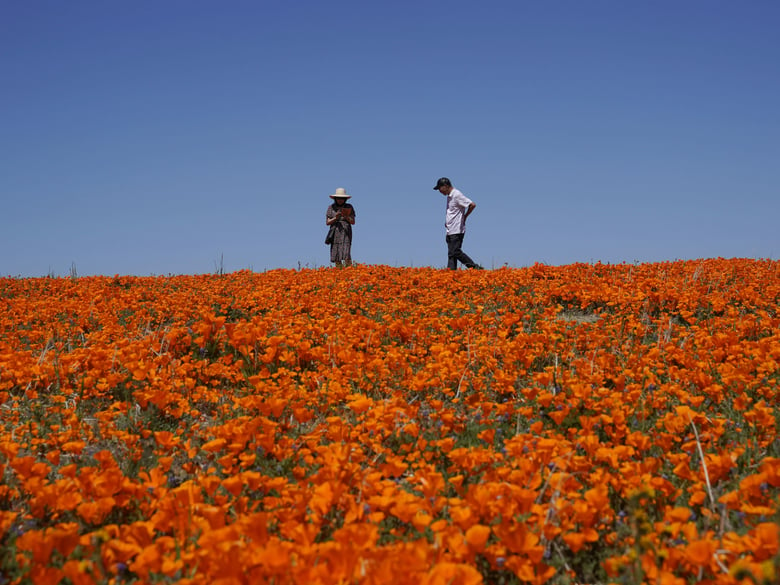‘City Year’ for Sacramento Graduates | Farm to School Program | Where to Catch California Super Blooms Responsibly
Update RequiredTo play audio, update browser or
Flash plugin.

Visitors walk on a hilltop over a field of blooming flowers near the Antelope Valley California Poppy Reserve, Monday, April 10, 2023, in Lancaster, Calif.
AP Photo/Marcio Jose Sanchez
A Sacramento AmeriCorps program offers a year of service for recent high school graduates. How California’s Farm to School program connects students with locally sourced meals. A statewide look at the wildflower super blooms.
City Year Sacramento
Recent high school graduates undecided about their next step have an opportunity to give back. City Year Sacramento is a non-profit organization that partners with Sacramento City Unified School District campuses. The mission is to help students disproportionately affected by the lack of school resources, growing up in low-income households. The program recruits and trains young adults to serve as AmeriCorps ambassadors for one year, to work as mentors and tutors for K-12 students. Macey Amissah-McKinney is the Senior Vice President & Executive Director of City Year Sacramento, and a former AmeriCorps member herself. She discusses the success of the program and the upcoming fundraising event Ripples of Hope at the California Museum on May 4th.
Farm to School program
This school year, California rolled out a first in the nation universal meal program. Students, regardless of income, receive two free meals each school day across the state. And California is taking access to nutritious food a step further. The “Farm to School” program connects local farmers with schools, so that students have access to nutritious, locally sourced, food, which in turn supports the local agricultural economy. Funding started two years ago by the state legislature and has been scaling up since. Insight spoke with First Partner Jennifer Siebel Newsom, who reports since 2021, the “Farm to School” program has helped close to 1.5-million students, more than 150 school districts, and over 50 farms– out of the state’s more than 5-million students and roughly 1,000 school districts. Insight also spoke with legendary chef Alice Waters who is a pioneer of California’s farm-to-table cuisine, as well as the founder of the Edible Schoolyard Project. But the state-funded program also comes with challenges. Diane Pratt-Heavner with the School Nutrition Association, a non-profit that represents people who plan, prepare and serve healthy school meals, joins us to discuss whether these requirements are realistic for food service staff on campus.
California superblooms
It’s an explosion of color that hasn’t been seen in parts of the Golden State for over three years. Torrential rain and snow have helped herald the return of wildflower “super blooms” in California. The radiant displays of orange, yellows, purples, and more this Spring are so vivid and widespread that they can be seen from space. The rare blooms are again drawing crowds around the state eager to share the experience on social media and reviving the debate about how to best preserve these fragile habitats. To learn more about what makes these extraordinary blooms possible, where the best hotspots in California currently are, and the efforts to preserve these flowers for future generations, Insight spoke with Nick Jensen, Conservation Program Director for the California Native Plant Society.